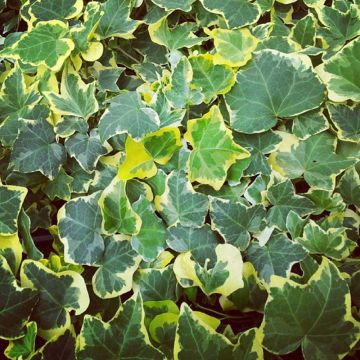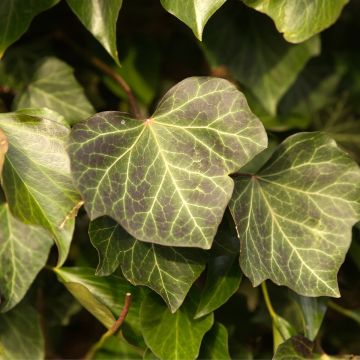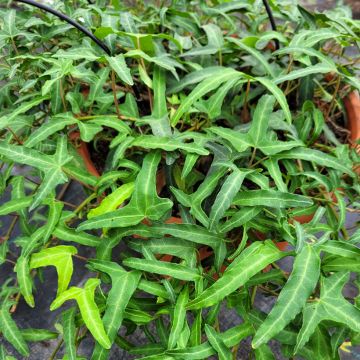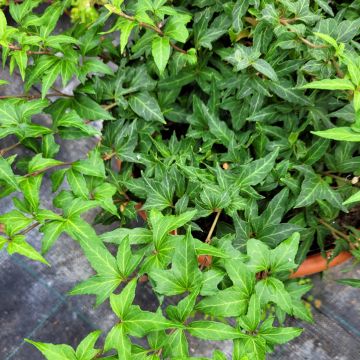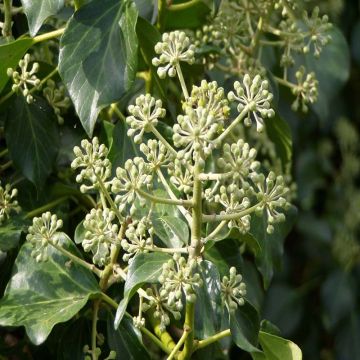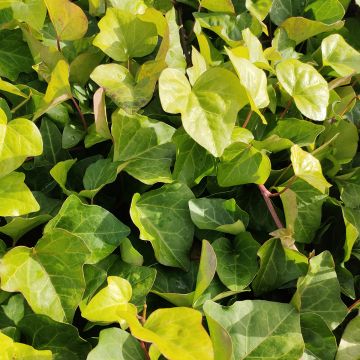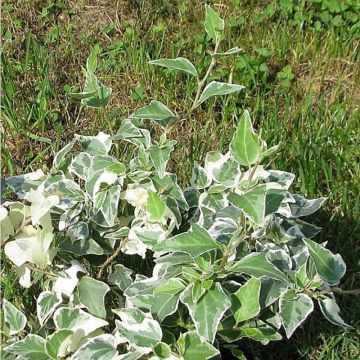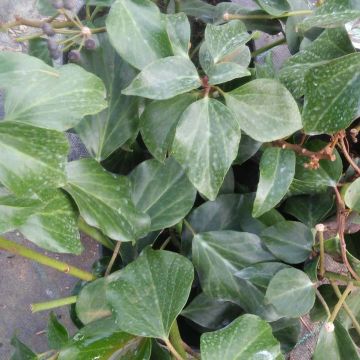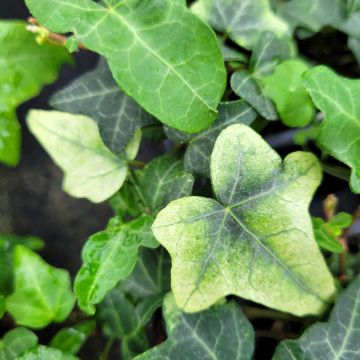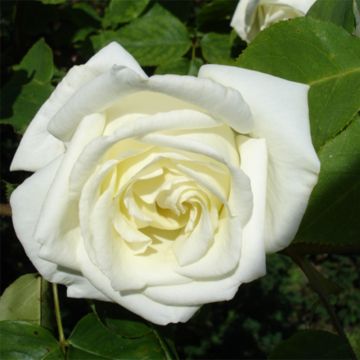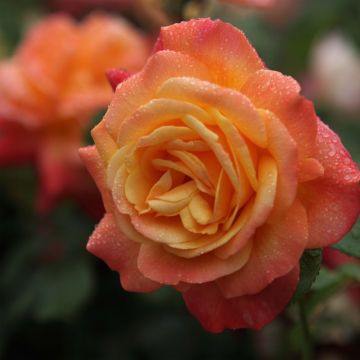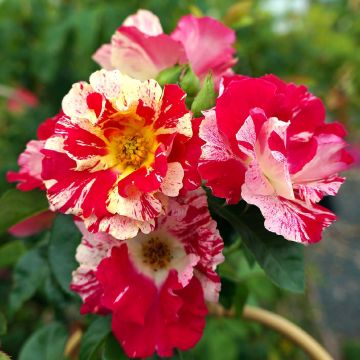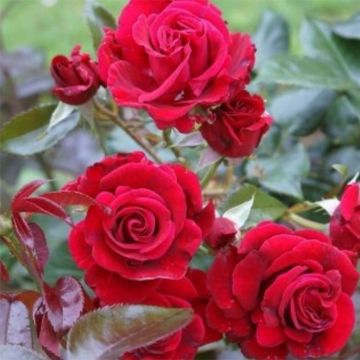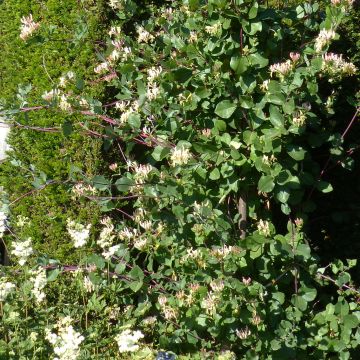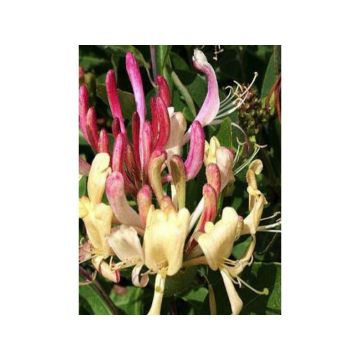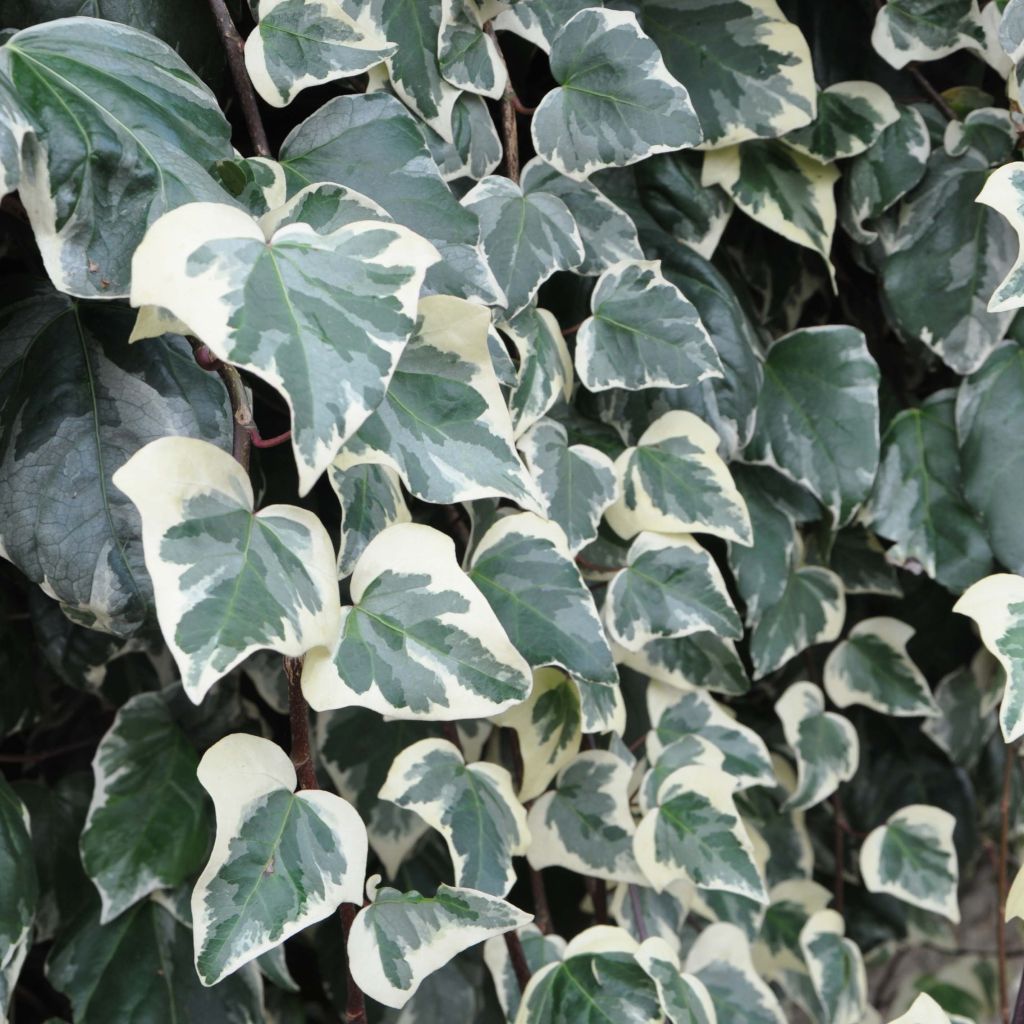

Hedera algeriensis Gloire de Marengo - Algerian Ivy
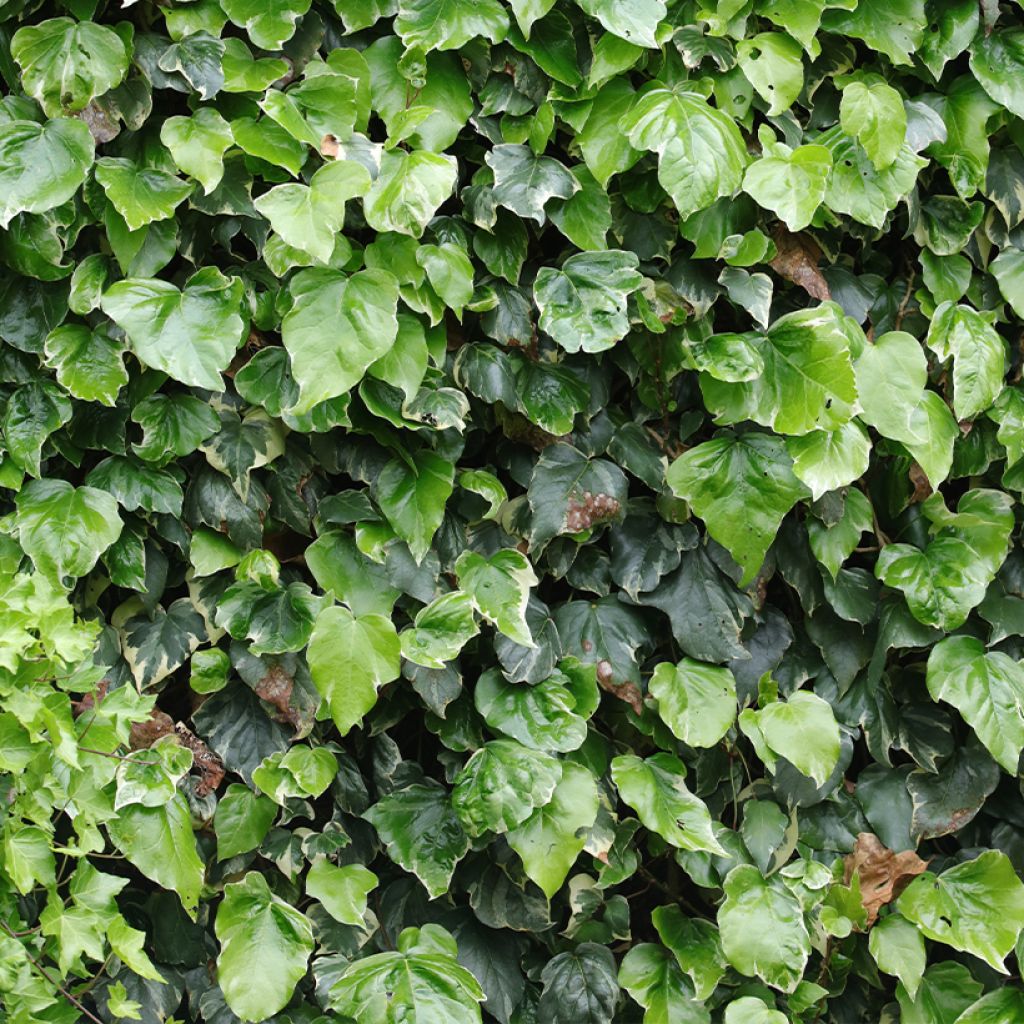

Hedera algeriensis Gloire de Marengo - Algerian Ivy
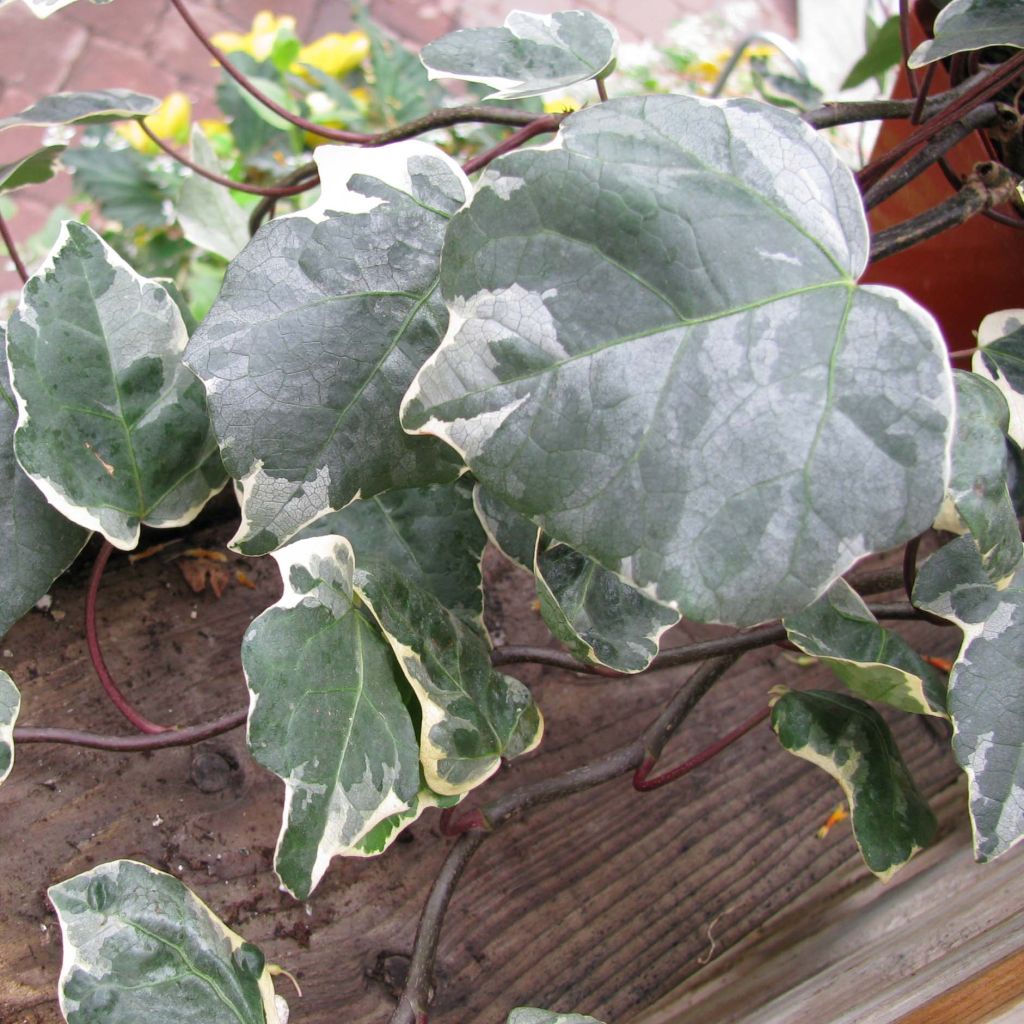

Hedera algeriensis Gloire de Marengo - Algerian Ivy
Hedera algeriensis Gloire de Marengo - Algerian Ivy
Hedera algeriensis Gloire de Marengo
Algerian Ivy, Canary Island Ivy
This item cannot be shipped to the selected country
Delivery charge from €5.90
More information
Schedule delivery date,
and select date in basket
This plant carries a 6 months recovery warranty
More information
We guarantee the quality of our plants for a full growing cycle, and will replace at our expense any plant that fails to recover under normal climatic and planting conditions.
From €5.90 for pickup delivery and €6.90 for home delivery
Express home delivery from €8.90.

Does this plant fit my garden?
Set up your Plantfit profile →
Description
This ivy or Hedera algeriensis 'Gloire de Marengo' is a magnificent variegated foliage form of green, silver-grey, cream, and white from the Canary ivy. Its large swollen leaves, carried by red petioles, sometimes take on shades of pink in cold weather. Evergreen, elegant, and extremely bright, it is especially popular in semi-shaded or shady areas where few plants are willing to grow. Ideal for covering a wall, fence, large slope, or the base of a hedge, it is not afraid of drought or poor, dry soil in summer. As bright as a ground cover as it is as a climber, this ivy sometimes lacks hardiness in cooler climates. Nevertheless, it also grows well in a large pot to store during winter!
Hedera algeriensis or canariensis is a botanical species native to the Tunisian and Algerian coasts, where it grows in mountainous areas. 'Gloire de Marengo' is believed to be a spontaneous hybrid between Hedera algeriensis, the green-leaved species, and Hedera canariensis, which has enormous leaves. It stands out for its beautifully coloured foliage. Ivies belong to the Araliaceae family and are cousins of ginseng and fatsias. 'Gloire de Marengo' has a moderately fast growth, sometimes taking time to establish. Its habit is both climbing and creeping. An adult plant will reach 5 to 7 metres (16 to 23 feet) in height or width. Its large triangular leaves, slightly swollen, with 3 to 5 faintly marked lobes, measure 9 to 11 cm (4in) in all directions. They are randomly variegated with dark emerald green, grey-green, silver, and cream-yellow. The young leaves are primarily white. Its reddish branches, partially covered with red star-shaped hairs, become more brown as they age. They are equipped with aerial roots that firmly allow the plant to cling to any support, even on a wall. Flowering occurs in September-October, and fruiting occurs in late winter or early spring. The flowers, cream to yellowish-green, have five petals. They are grouped in umbels themselves arranged in terminal clusters. The fruits are round, black-blue berries, 8 to 9 mm (0in) wide, and are gathered in clusters. When ingested by mammals, especially humans, they are toxic but nutritious and valuable for specific birds, such as songbirds and wood pigeons.
It suits everything, and everything suits it! A statement that sounds like a plea for ivy, in all its splendour with 'Gloire de Marengo'. This Canary ivy 'Gloire de Marengo' transforms everything it touches, even in the slightly challenging areas of the garden, in the sun or shade, in soil full of roots, dry in summer, and with a high lime content, where no lawn can establish itself. Its luxuriant growth effectively and perfectly covers the ground, eventually discouraging weeds. It hides unsightly fences with its exquisite foliage and brings a touch of romance to old stones. If it carpets the ground, its foliage can be brightened up by accompanying it with spring-flowering bulbs such as botanical narcissus or muscari, which will emerge from the carpet in spring. On a slightly shaded wall, it pairs well with clematis montana or a climbing rose like Felicia or Albertine. Combine it with periwinkles, Pachysandra terminalis, or a climbing hydrangea to create a largely original and colourful ground cover on a slope.
Did you know?
The ivy in our gardens is a decontaminant, capable of absorbing pollutants such as benzene produced in the exhaust fumes of our vehicles. This plant is not afraid of salt used for snow removal, cold, or dryness, and its flowering is an excellent source of food for bees in late summer or autumn. Even though their reputation as destroyers is well established, ivies have protected old, dilapidated walls more than they have destroyed them; the removal of this plant is firmly anchored in the crevices that cause the masonry to collapse while the plant maintains its integrity.
Report an error about the product description
Hedera algeriensis Gloire de Marengo - Algerian Ivy in pictures
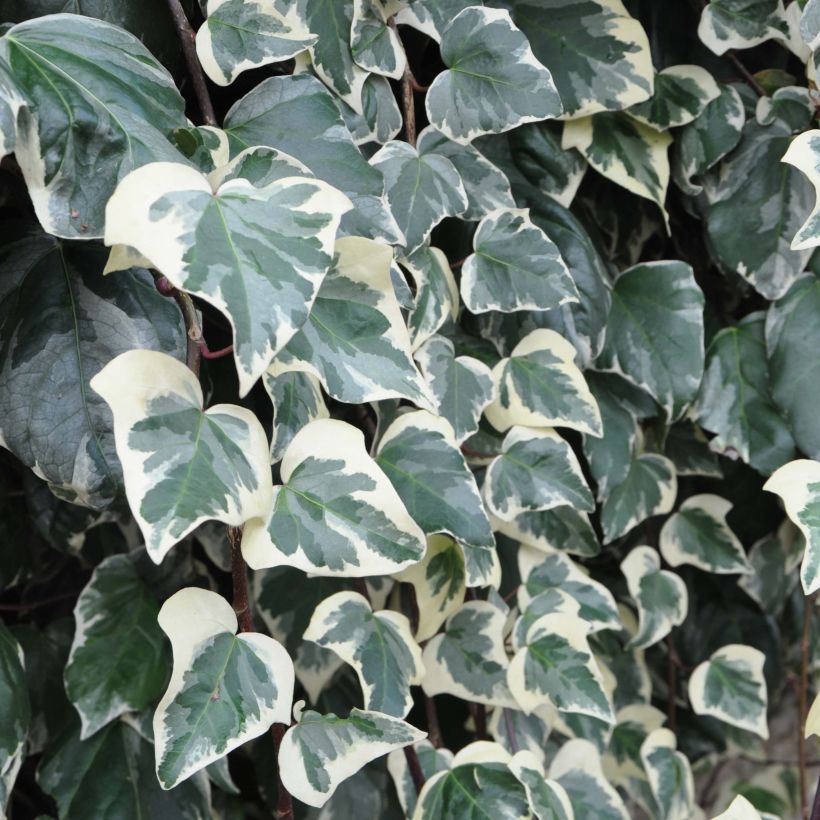

Plant habit
Flowering
Foliage
Botanical data
Hedera
algeriensis
Gloire de Marengo
Araliaceae
Algerian Ivy, Canary Island Ivy
Cultivar or hybrid
Other Hedera - Ivy
Planting and care
The Hedera 'Gloire de Marengo', easy to grow in ordinary soil, should be planted in spring in areas with marginal hardiness, but preferably in early autumn in dry and warm climates. Plant it in well-prepared soil to facilitate its establishment and keep it cool during the first two years following planting. It is not demanding in terms of soil type and can tolerate limestone, rocks, and clayey and heavy soils if they are properly loosened and drained. It adapts to almost all exposures, from light sun to shade, but prefers partially shaded and sheltered positions from cold winds that spare its foliage. To encourage the emergence of young shoots more quickly, fix the first ones to the ground (layering). Don't hesitate to rejuvenate the base by removing old branches. Regular pruning is necessary to shape or maintain it within a defined space. This plant is not susceptible to pests or diseases. Hardy down to -12°C (10.4°F), it can regrow from the stump if it has been well protected during the winter.
Planting period
Intended location
Care
-
, onOrder confirmed
Reply from on Promesse de fleurs
Foolproof climbers
Haven't found what you were looking for?
Hardiness is the lowest winter temperature a plant can endure without suffering serious damage or even dying. However, hardiness is affected by location (a sheltered area, such as a patio), protection (winter cover) and soil type (hardiness is improved by well-drained soil).

Photo Sharing Terms & Conditions
In order to encourage gardeners to interact and share their experiences, Promesse de fleurs offers various media enabling content to be uploaded onto its Site - in particular via the ‘Photo sharing’ module.
The User agrees to refrain from:
- Posting any content that is illegal, prejudicial, insulting, racist, inciteful to hatred, revisionist, contrary to public decency, that infringes on privacy or on the privacy rights of third parties, in particular the publicity rights of persons and goods, intellectual property rights, or the right to privacy.
- Submitting content on behalf of a third party;
- Impersonate the identity of a third party and/or publish any personal information about a third party;
In general, the User undertakes to refrain from any unethical behaviour.
All Content (in particular text, comments, files, images, photos, videos, creative works, etc.), which may be subject to property or intellectual property rights, image or other private rights, shall remain the property of the User, subject to the limited rights granted by the terms of the licence granted by Promesse de fleurs as stated below. Users are at liberty to publish or not to publish such Content on the Site, notably via the ‘Photo Sharing’ facility, and accept that this Content shall be made public and freely accessible, notably on the Internet.
Users further acknowledge, undertake to have ,and guarantee that they hold all necessary rights and permissions to publish such material on the Site, in particular with regard to the legislation in force pertaining to any privacy, property, intellectual property, image, or contractual rights, or rights of any other nature. By publishing such Content on the Site, Users acknowledge accepting full liability as publishers of the Content within the meaning of the law, and grant Promesse de fleurs, free of charge, an inclusive, worldwide licence for the said Content for the entire duration of its publication, including all reproduction, representation, up/downloading, displaying, performing, transmission, and storage rights.
Users also grant permission for their name to be linked to the Content and accept that this link may not always be made available.
By engaging in posting material, Users consent to their Content becoming automatically accessible on the Internet, in particular on other sites and/or blogs and/or web pages of the Promesse de fleurs site, including in particular social pages and the Promesse de fleurs catalogue.
Users may secure the removal of entrusted content free of charge by issuing a simple request via our contact form.
The flowering period indicated on our website applies to countries and regions located in USDA zone 8 (France, the United Kingdom, Ireland, the Netherlands, etc.)
It will vary according to where you live:
- In zones 9 to 10 (Italy, Spain, Greece, etc.), flowering will occur about 2 to 4 weeks earlier.
- In zones 6 to 7 (Germany, Poland, Slovenia, and lower mountainous regions), flowering will be delayed by 2 to 3 weeks.
- In zone 5 (Central Europe, Scandinavia), blooming will be delayed by 3 to 5 weeks.
In temperate climates, pruning of spring-flowering shrubs (forsythia, spireas, etc.) should be done just after flowering.
Pruning of summer-flowering shrubs (Indian Lilac, Perovskia, etc.) can be done in winter or spring.
In cold regions as well as with frost-sensitive plants, avoid pruning too early when severe frosts may still occur.
The planting period indicated on our website applies to countries and regions located in USDA zone 8 (France, United Kingdom, Ireland, Netherlands).
It will vary according to where you live:
- In Mediterranean zones (Marseille, Madrid, Milan, etc.), autumn and winter are the best planting periods.
- In continental zones (Strasbourg, Munich, Vienna, etc.), delay planting by 2 to 3 weeks in spring and bring it forward by 2 to 4 weeks in autumn.
- In mountainous regions (the Alps, Pyrenees, Carpathians, etc.), it is best to plant in late spring (May-June) or late summer (August-September).
The harvesting period indicated on our website applies to countries and regions in USDA zone 8 (France, England, Ireland, the Netherlands).
In colder areas (Scandinavia, Poland, Austria...) fruit and vegetable harvests are likely to be delayed by 3-4 weeks.
In warmer areas (Italy, Spain, Greece, etc.), harvesting will probably take place earlier, depending on weather conditions.
The sowing periods indicated on our website apply to countries and regions within USDA Zone 8 (France, UK, Ireland, Netherlands).
In colder areas (Scandinavia, Poland, Austria...), delay any outdoor sowing by 3-4 weeks, or sow under glass.
In warmer climes (Italy, Spain, Greece, etc.), bring outdoor sowing forward by a few weeks.

































